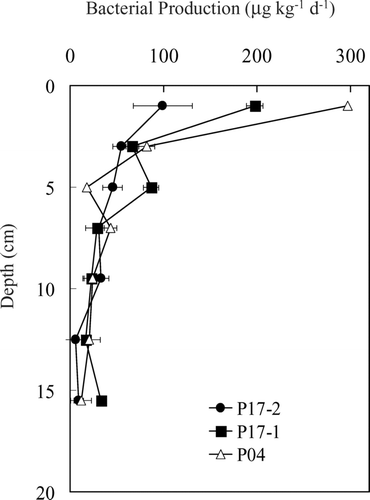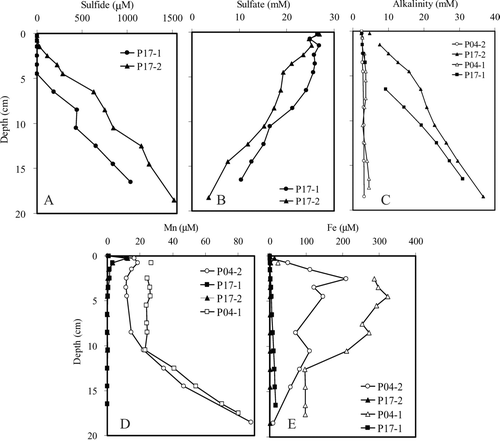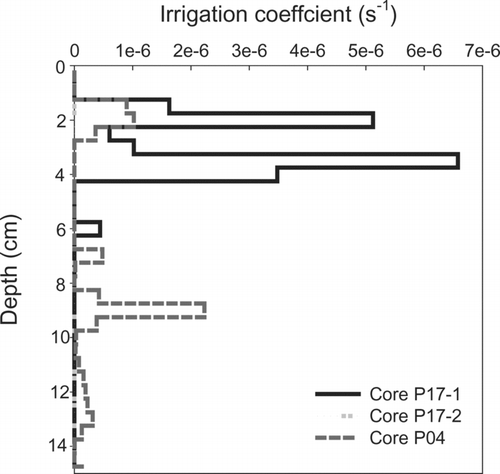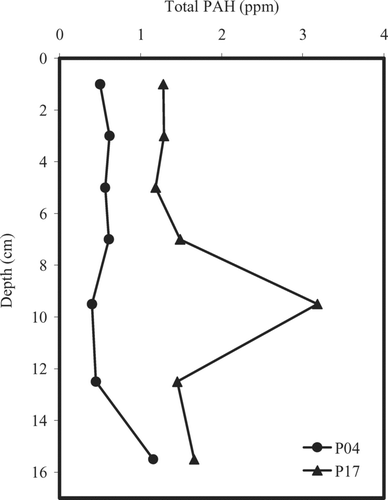Figures & data
FIGURE 2 Bacterial production (μ g C kg− 1 day− 1) with depth (cm) for cores from stations P17 and P04. Error bars on bacterial production are the standard deviation of triplicate samples.

FIGURE 3 Pore water concentrations for sulfide (A), sulfate (B), alkalinity (C), manganese (D), and iron (E) for P17 (filled) and P04 (empty) cores.

TABLE 1 Average (AVG) and Standard Deviation (SD) of PAH Mineralization Rates and Turnover Time
TABLE 2 Bacterial Production and PAH Mineralization Rate Averages
FIGURE 5 Model-calculated irrigation coefficients are shown as functions of depth. The model results indicate that the DIC profile of core P17-1 was a result of strong bioirrigation near the sediment-water interface, and that of core P04 was a result of deep-penetrating bioirrigation as a significant bioirrigation was hindcasted for 13 to 14 cm below the interface. The DIC profile of core P17-2 indicates a lack of bioirrigation.


